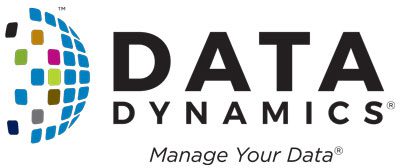Highlights:
- Data silos, isolating data within an organization, are a significant challenge costing the global economy $3.1 trillion annually. These silos occur due to disparate systems, inconsistent formats, and lack of integration, hindering data accessibility and analysis.
- Consequently, data silos negatively impact productivity, innovation, and competitiveness, leading to duplication of effort, inefficiencies, and missed opportunities. Moreover, delayed decision-making, compliance risks, and inefficiencies further exacerbate organizational challenges.
- To combat this challenge, organizations can implement a multi-pronged strategy that includes data integration tools, unified data management software, cloud-based storage, BI & analytics tools, and data governance to standardize, centralize, analyze, and govern their data for better decision-making, collaboration, and efficiency.
- Businesses can thus unlock a goldmine of opportunity, fostering collaboration, innovation, and, ultimately, success in today’s competitive market.
In this Blog:
Data is the new oil, they say, but what happens when your oil reserves are scattered across a vast landscape, inaccessible and fragmented? That’s the multi-trillion-dollar problem of data silos. A recent study by IDC reveals a startling statistic: data silos cost the global economy a whopping $3.1 trillion annually. Imagine the innovation and progress that could be fueled with that money if businesses could effectively harness their data. Data silos are one of the most significant challenges facing businesses today when it comes to unlocking the potential of their data. This blog post dives deep into the causes of data silos and unveils powerful strategies to break them down for good. By eliminating these barriers, businesses can unlock a new era of data-driven decision-making and propel themselves toward transformative success.
What are data silos?
Data silo is a term used to describe the isolated storage of data within an organization. Data silos occur when different departments or individuals within an organization use different software systems, applications, or databases to store and manage their data. A staggering 40% of business-critical data is trapped in data silos, according to a study by Experian. Often, these systems are not designed to communicate with one another, which means that data remains trapped within specific departments or areas of the organization. Silos can also occur when data is not properly shared or integrated across different business units, geographic locations, or teams. Other factors that can contribute to data silos include inconsistent data formats, duplicate data, and lack of clear data governance policies. As a result, organizations struggle to access, analyze, and share information across departments, leading to missed opportunities, inefficiencies, and reduced competitiveness.
Understanding the Multifaceted Impact on Organizational Growth
The overall impact of data silos on an organization can be significant, with negative consequences for productivity, innovation, and competitiveness. Data silos occur due to the existence of multiple data lakes within an organization. This can lead to duplication of effort, inefficiencies, and missed opportunities, as different departments or teams may be working on similar tasks without realizing it. This can result in wasted resources, time, and money. According to a Harvard Business Review survey, 84% of executives report suffering from the negative effects of data silos. Additionally, data silos can make it difficult for organizations to access, analyze, and share information across departments or teams, which can hinder decision-making and reduce competitiveness. Inaccurate or outdated data can also lead to errors or mistakes, which can impact the overall quality of an organization’s products or services. To succeed in today’s data-driven business environment, organizations must find ways to break down data silos and create a unified data management system that enables collaboration, innovation, and informed decision-making.
Let’s take a deep dive into some specific impacts of data silos and how they curb organizational growth:
- Lack of cross-functional analytics: There are a few reasons why cross-functional analytics doesn’t occur. The first reason is that data is often siloed within departments. Each department has its own data, and getting access to data from other departments can be challenging. Even if you have access, the data may be in different formats, making it difficult to combine and analyze. Another reason is the need for people with specialized skills to consolidate data across the organization and perform cross-functional analytics. Departments often have their own analysts who are experts in their own data but may not know how to work with data from other departments. And even if there are people with the necessary skills, they may not have the time or resources to do cross-functional analytics. The solution is to standardize data formats and create centralized repositories of data that anyone can access. It’s also important to invest in training for people who need to learn how to do cross-functional analytics.
- Increased costs: Data silos can lead to duplicated efforts and increased costs, mainly when different departments collect and store similar data. The biggest cost-driving factor is the need to purchase, install, and operate multiple disparate systems. These systems often require different skill sets to manage and maintain, which can lead to higher training and support costs. In addition, data silos can limit visibility into organizational data, making it difficult to gain insights that could help reduce costs. The solution to overcoming these increased costs is to establish a centralized data repository that can be accessed by all users. This will allow for more consistent management of the data and improved visibility into organizational information. Additionally, users will be able to leverage the same skillset to work with the data, which will result in reduced training and support costs.
- Delayed decision-making: Data silos can cause delayed decision-making by making it challenging to obtain accurate and up-to-date information. When data is siloed in different departments or systems, it can take longer to access, process, and analyze the data, leading to delays in decision-making. For instance, suppose an organization has separate databases for customer data, financial data, and operations data. In that case, obtaining a comprehensive view of the business’s financial health and operations may be difficult. This can result in delays in identifying areas that need improvement, such as reducing costs, increasing revenue, or improving efficiency. Consequently, decision-makers may miss opportunities to make critical decisions and respond quickly to market changes. By breaking down data silos and creating a unified data management system, organizations can obtain a more comprehensive and accurate view of their business, enabling them to make timely and informed decisions.
- Compliance and regulatory risks: A study by Accenture found that 54% of financial services executives surveyed reported that their organization had experienced a data breach due to a lack of collaboration across departments. When data is siloed in different departments or systems, it can be challenging to ensure that all data is consistent and compliant with relevant regulations. Most of the time, companies miss out on valuable insights that could help them improve their operations and protect their customers’ data. This can lead to compliance violations, fines, and reputational damage. For instance, in the healthcare industry, patient data is subject to strict privacy regulations, such as the Health Insurance Portability and Accountability Act (HIPAA). If patient data is siloed in different departments, it can be challenging to ensure that all data is protected and compliant with HIPAA. This can result in costly violations and loss of trust from patients. Implementing a unified data management system can act as a single source of truth and ensure that all data is accurate, up-to-date, and compliant with relevant regulations, reducing compliance and regulatory risks.
- Inefficiency and duplication: Data silos can lead to significant inefficiencies in organizations, resulting in duplicate data entry, inconsistent data, and inefficient processes. This can cause redundancies, wasted resources, and increased costs. For example, if customer data is stored separately in different departments, it can result in duplicate customer records, leading to confusion, wasted resources, and even customer dissatisfaction. Additionally, communication barriers between departments and teams can lead to miscommunications, duplicated efforts, and a lack of collaboration, causing project delays, missed deadlines, and increased costs. Furthermore, data silos can make it difficult to track and analyze data effectively, leading to poor decision-making and missed opportunities. To overcome these inefficiencies, organizations need to invest in a centralized data management system that allows for easy access to data across departments and teams, providing training for employees on how to use the system effectively and breaking down data silos. This can help eliminate redundancies, improve collaboration, and ensure that everyone has access to the most up-to-date information, resulting in improved efficiency, reduced costs, and increased profitability.
There are several ways to overcome the problem of data silos. Most organizations store their data in data lakes where data is duplicated, unsupervised, and unutilized, adding a number of challenges such as lack of data knowledge, data sharing with access control, and inducing security risks. Aggregating these data lakes into a centralized data ocean becomes crucial for ensuring data consolidation and robust privacy & security of personally identifiable information (PII). Data oceans exist in the cloud. Data management in a data ocean is a one-time activity instead of multiple rounds of management, analysis, security, and compliance checks across numerous data lakes.
Bridging the Gap: Solutions to Eliminate Data Silos and Drive Organizational Efficiency
There are several tools and technologies available that can help organizations eliminate data silos and promote collaboration and efficiency.
1. Data Integration Tools: Data Integration Tools are software solutions that facilitate the process of extracting data from various sources, transforming it to a standard format, and then loading it into a target system. These tools can help organizations overcome the challenges posed by data silos by enabling data to flow freely across the organization. Data Integration Tools offer several features, such as data mapping, data profiling, and data quality checks, ensuring that data is standardized and validated before being integrated into the target system and preventing data inconsistency and errors. Additionally, these tools offer support for a wide range of data sources and formats, enabling organizations to consolidate data from multiple sources or data lakes and create a unified view of their data assets. By doing so, organizations can enjoy a comprehensive approach to data integration & management, break down data silos, improve data accessibility, and enable better decision-making.
2. Unified Data Management: Unified Data Management (UDM) is a powerful approach to managing data that can help organizations overcome the challenges posed by data silos. Data silos occur when data is stored in isolated systems or repositories, often resulting in duplication, inconsistency, and inaccessibility of data. UDM addresses these issues by providing a comprehensive software that integrates all aspects of data management, including data governance, data integration, data quality, data mobility, and metadata management. With a centralized approach to data management, UDM ensures data consistency and accuracy while also providing a single source of truth for all data assets in the organization. This not only improves collaboration and decision-making but also helps organizations to meet regulatory requirements and achieve operational excellence. Check out Data Dynamics’ Unified Data Management Software for more information.
3. Cloud-based Storage and Collaboration Tools: Cloud-based storage solutions such as Dropbox, Google Drive, and Microsoft OneDrive provide a centralized location for storing and sharing files and data, making it easy for teams to collaborate and access information from anywhere. This technology can help eliminate data silos by providing a centralized software that enables data to be stored and accessed from anywhere. Additionally, cloud-based storage provides scalability, enabling organizations to easily scale their storage capacity as their data grows. This is especially useful for organizations that deal with large amounts of data, as they can quickly and easily increase their storage capacity without having to worry about hardware limitations. Cloud-based storage also offers advanced security features, such as encryption and access controls, ensuring that data is protected from unauthorized access or breaches. Overall, cloud-based storage is an effective solution for eliminating data silos, providing a centralized and scalable software for storing and accessing data, improving collaboration and decision-making across the organization.
4. Business Intelligence (BI) and Analytics Tools: Business Intelligence (BI) and Analytics Tools are software solutions that help organizations analyze, visualize, and gain insights from their data. These tools play a vital role in eliminating data silos by ensuring visualization and analysis of data from different sources, enabling cross-functional analytics and data-driven decision-making. They can connect to various data sources, including cloud-based storage, relational databases, and big data software, enabling organizations to consolidate their data into a single software. With advanced data visualization features, these tools enable organizations to create interactive dashboards and reports that help them gain insights and make data-driven decisions. Additionally, they provide data modeling and data mining capabilities to identify patterns and trends in data that might not be apparent at first glance.
5. Data Governance Tools: Data Governance Tools are software solutions that provide a framework for managing and controlling data assets across an organization. These tools play a vital role in eliminating data silos by providing a standardized approach to data management. They define data policies, procedures, and standards, ensuring that data is consistently and accurately managed throughout its lifecycle. These tools enable organizations to establish data ownership, define data quality standards, and monitor compliance with regulations and policies. Data Governance Tools also provide a comprehensive view of all data assets across the organization, enabling organizations to identify and eliminate data silos. Additionally, these tools enable collaboration between different teams and departments, promoting a culture of data sharing and transparency. By doing so, Data Governance Tools help organizations to break down data silos, improve data accessibility, and enhance decision-making.
Eliminating data silos can be a game-changer for businesses, unlocking a treasure trove of insights and opportunities that were previously hidden. With access to comprehensive and accurate data, businesses can make more informed decisions, uncover new revenue streams, and boost their bottom line. By breaking down the barriers between departments and systems, data silos can foster a culture of collaboration, innovation, and agility. This, in turn, can lead to greater productivity, faster time to market, and improved customer satisfaction. Additionally, consolidating data from various sources can improve efficiency and reduce costs by eliminating redundancies and streamlining data management processes. It can also help organizations ensure better data quality by standardizing data across the organization, leading to fewer errors and inconsistencies. Ultimately, eliminating data silos can help businesses harness the full potential of their data assets, driving growth, innovation, and success in today’s data-driven economy.
Here’s a case study on how Data Dynamics Consolidated, Managed, and Managed 40 Petabytes of Data with a Unified Unstructured Data Management Software for a Fortune 20 financial services institution.
To know more about how Data Dynamics can help you eliminate data silos and effectively manage your data, please visit www.datadynamics.com or reach out to us at solutions@datdyn.com or (713)-491-4298.






